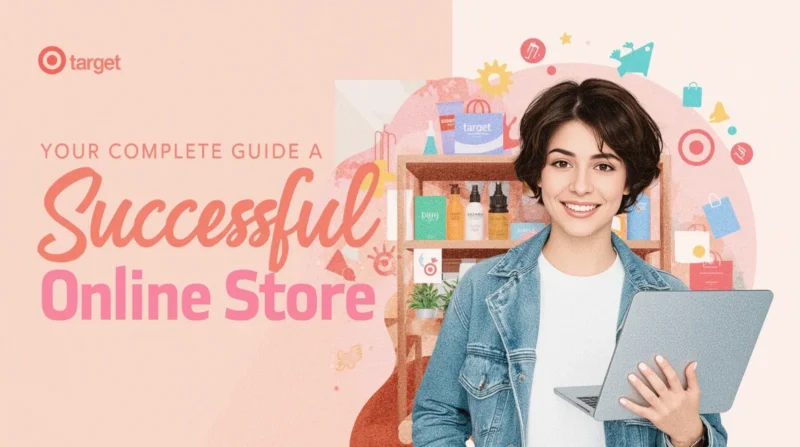Table of Contents
- What Is a “Target Online Store”?
- Why SEO Matters for Online Stores?
- Keyword Research: Laying the Foundation
- Site Structure: Keep It Simple and Logical
- On‑Page SEO: Titles, Descriptions, and Headers
- Content: Blog, Buying Guides, FAQs
- Reviews and Ratings: Social Proof That Counts
- Images and Media: Show, Don’t Just Tell
- Technical SEO: Keep the Engine Running
- Local SEO and Omnichannel Strategy
- Link‑Building: Credibility Through Connections
- Monitoring and Analytics: Learn and Improve
- Customer Experience: Make Buying Easy
- Ongoing Updates: Keep Your Store Fresh
- Case Study: How Target Does It?
- Quick SEO Checklist
- Conclusion
Running a target online store, whether you’re part of a major retailer, marketplace, or a dedicated niche shop, can feel like juggling flaming torches. You want to attract customers, rank well on Google, and deliver sales. In this guide, we’ll break down every step you need to build a smart, easy‑to‑use, SEO‑friendly online store that wins clicks and makes shoppers happy.
What Is a “Target Online Store”?
When people talk about a target online store, they often mean one of two things:
-
A specific e‑commerce site built around a core product, category, or audience (like organic skincare or tech gadgets).
-
An online presence for a brick‑and‑mortar “Target” store, meaning the official retail giant’s webshop.
This guide focuses on the first meaning, how to craft an effective, SEO optimized store aimed at a clear group of buyers.
Why SEO Matters for Online Stores?
SEO (search engine optimization) is more than just stuffing keywords into a page. It means making your site helpful and visible. According to Investopedia, several key steps matter: good keyword research, optimized URLs, on‑page changes like titles and headings, quality content, and link building.
Target.com itself has leaned into smart SEO strategies, solid site structure, rich content, and local awareness to boost visibility. As e‑commerce experts say, a well‑structured site easy to browse, crawl, and understand can make or break your success.
Keyword Research: Laying the Foundation
Your store starts with understanding what people search for. For a target online store, you want phrases like:
-
“buy [product] online”.
-
“[product] online store”.
-
“best [product type] under [price]”.
Use tools like Google Keyword Planner, Ahrefs, or SEMrush to find high‑search, low‑competition keywords. Also include longer phrases with clear purchase intent (e.g., “handmade soy candles online store”).
Remember: Balance is key, don’t ignore long‑tail queries, but also optimize for broader, valuable terms.
Site Structure: Keep It Simple and Logical
Great e‑commerce sites group products intuitively:
-
Homepage.
-
Category pages.
-
Sub‑category pages.
-
Product detail pages.
This setup helps users find what they want quickly and makes it easy for search engines to crawl your site. Experts advise using clean, organized URLs like yourstore.com/candles/soy/red-cup to signal content clearly.
On‑Page SEO: Titles, Descriptions, and Headers
Make your SEO work naturally:
-
Page titles: Include your focus keyword once, ideally near the front, limited to ~60 characters.
-
Meta descriptions: One call‑to‑action and your keyword within 155-160 characters.
-
Headers (H1, H2, H3): Break up content, include keywords.
-
Product descriptions: Describe benefits clearly; sprinkle in related keywords.
-
Image alt text: Describe what’s in the image plus your keyword (e.g., “soy red candle burning”).
This matches proven practices on big platforms like Target.com.
Content: Blog, Buying Guides, FAQs
Google values pages that answer questions. A section of your target online store could include:
-
How-to guides (e.g., “How to choose soy candles for stress relief”)
-
Checklists (e.g., “5 things to look for in eco candles”)
-
FAQs (“Do soy candles burn longer than paraffin?”)
Use internal links to help readers find related content. And make your content simple, honest, and easy to scan by using bullet points and short paragraphs.
Reviews and Ratings: Social Proof That Counts
Online shoppers trust reviews. Target.com shows that products with at least 4-star ratings and hundreds of reviews rank higher. Ask customers to leave honest feedback. Highlight top reviews under each product. Use schema markup for review stars; this can help your results stand out in search.
Images and Media: Show, Don’t Just Tell
According to research, visual appeal boosts engagement. For your target online store:
-
Use clear product images from multiple angles.
-
Show lifestyle shots in real or simulated home environments.
-
Optimize for fast loading, and compress images without losing quality.
Include captions or short videos showing product use to help buyers picture it in their lives.
Technical SEO: Keep the Engine Running
Technical behind-the-scenes work matters:
-
Site speed: Fast loading improves both user satisfaction and search ranking.
-
Mobile-first: Many buyers shop via phone; ensure everything looks and works well on mobile.
-
Breadcrumb navigation: Shows user path and boosts SEO.
-
Schema markup: Use structured data for products, prices, availability, and reviews so search engines can display rich results.
Local SEO and Omnichannel Strategy
If your target online store also serves a physical location (like local pickup), optimize for local searches:
-
Add store hours, address, and phone number.
-
Optimize Google Business Profile.
-
Keep store pages updated with events or special services.
-
Mention “online store + [city name]” in local pages.
Target.com boosts traffic by merging its local and online presence.
Link‑Building: Credibility Through Connections
Backlinks signal trust. You can:
-
Reach out to bloggers or influencers in your niche.
-
Offer to write guest articles or product reviews.
-
Get featured in roundups or gift guides.
-
Work with the local press or communities.
Start with a few strong, relevant backlinks. Over time, this boosts your authority and rankings.
Monitoring and Analytics: Learn and Improve
Use tools like Google Analytics and Search Console to:
-
Track top‑landing pages and keywords.
-
Monitor bounce rate and dwell time.
-
Spot broken links or slow‑loading pages.
-
See where your traffic is coming from.
Check performance monthly and tweak things like titles, content tone, or layout based on what you learn.
Customer Experience: Make Buying Easy
An optimized store isn’t just about SEO, it’s about user experience
-
Search box and filters (by price, color, rating…)
-
Clear calls‑to‑action: like “Add to Cart” or “Buy Now”.
-
Visible shipping info, estimated dates, and costs.
-
Easy checkout, minimal steps, guest checkout, multiple payment options.
-
Supportive details, shipping policies, returns, FAQs, and contact info are visible.
The easier and more transparent you make it, the more likely buyers are to convert.
Ongoing Updates: Keep Your Store Fresh
Google rewards fresh, active sites. Keep your target online store alive by
-
Adding new products as often as feasible.
-
Refreshing older product descriptions or photos.
-
Updating blog content and guides.
-
Running seasonal campaigns or promotions.
Target’s success story shows that digital growth is fueled by constant improvement.
Case Study: How Target Does It?
To see best practices in action, look at Target.com.
-
Use strong SEO on product page titles with keywords, multiple images, and review schema.
-
Offer new and trending categories, marked clearly.
-
Blend online and in‑store options, pickup, delivery, and deals.
Their $15 billion boost in digital revenue came from investing in supply chain, UX, omnichannel features, and tech, showing that SEO is vital, but so is overall experience.
Quick SEO Checklist
| Item | Yes/No | Notes |
|---|---|---|
| Keyword research done | ||
| Clear site hierarchy | ||
| Optimized titles/meta | ||
| Headers & alt text in place | ||
| Quality blog/guides added | ||
| Images optimized | ||
| Schema markup implemented | ||
| Fast mobile site | ||
| Reviews are visible with schema | ||
| Backlinks sourced | ||
| Analytics set up |
Conclusion
In today’s competitive e‑commerce landscape, building a successful target online store means mastering both SEO and user experience. From smart keyword use to clean site structure, rich content, and fast performance, each element plays a key role in attracting and converting customers. Keep optimizing, keep updating, and always center your efforts around what your audience needs, just like top retailers do.









